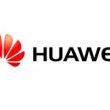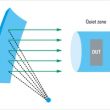

Smart City Expo World Congress (SCEWC) 2018 Huawei showcased its digital platform based on providing new ICT including Artificial Intelligence (AI), Internet of Things (IoT), big data and cloud, enabling city-wide intelligence and sustainable development across the international smart city industry. (more…)
November 19, 2018
Posted by: Anasia D'mello

Leveraging the unique speed, bandwidth and latency benefits of 5G technology, participants of the Verizon 5G Robotics Challenge will create insights, develop new use cases, and conceive innovative products that will advance the robotics industry. (more…)
November 15, 2018
Posted by: Anasia D'mello

Rockwell Automation and PTC announced that they have launched FactoryTalk InnovationSuite, powered by PTC, a software suite that enables companies to optimise their industrial operations and enhance productivity by providing decision makers with improved data and insights. (more…)
Posted by: Anasia D'mello

InterDigital, Inc., a mobile technology research and development company, and other members of the 5G-CORAL consortium recently conducted their first 5G trial at Global Mall Nangang Station Store in Taipei, Taiwan. (more…)
Posted by: Anasia D'mello

Kevin Ashton has been an executive director and visiting engineer at Massachusetts Institute of Technology (MIT) where he led work on the next generation of computing. Perhaps more importantly for this report, says Jeremy Cowan, he is the man who coined the term the ‘Internet of Things’. (more…)
November 14, 2018
Posted by: Anasia D'mello

‘The key to consumer connectivity needs and interoperability is standardisation and certification of devices’ – that was the message given by the marketing chair of HomeGrid Forum, Livia Rosu at this year’s Total Telecom Congress. (more…)
November 13, 2018
Posted by: Anasia D'mello

Infotecs, the international vendor of cyber security and threat intelligence solutions, became a founding member of the Innovation Cluster 5G Berlin e.V. and is actively contributing to the digitalisation in the German capital and testing various 5G technologies. (more…)
Posted by: Anasia D'mello

Compact antenna test ranges (CATR) are the solution of choice to design and verify the upcoming 5G smartphones, tablets and notebooks that operate in the new frequency range 2 (FR2: 24.250 GHz to 52.600 GHz). (more…)
Posted by: Anasia D'mello

Cyxtera Technologies, the secure infrastructure company, announced that Forrester Research, a providing global research and advisory firm, has named Cyxtera as a strong performer in its report “The Forrester Wave Zero Trust eXtended Ecosystem Providers, Q4 2018.” (more…)
Posted by: Anasia D'mello

Infineon Technologies AG acquires Siltectra GmbH, a start-up based in Dresden. The start-up has developed an innovative technology (Cold Split) to process crystal material efficiently and with minimal loss of material. Infineon will use the Cold Split technology to split silicon carbide (SiC) wafers, (more…)
November 12, 2018
Posted by: Anasia D'mello